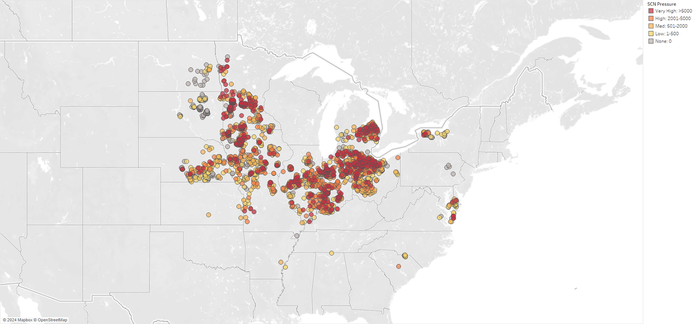February 15, 2024

It’s often said that what doesn’t kill you makes you stronger. In the case of soybean cyst nematodes (SCN), they prove that statement true with their ability to adapt and multiply.
For the last few decades, this renowned pest has wreaked havoc on soybean fields across the Midwest, costing growers an estimated $1.5 billion in yield every single year. Between Illinois, Iowa, Minnesota, Indiana and Ohio, SCN was detected in 82% of fields sampled, with 62% of those fields sampled showing medium to very high numbers of eggs in the soil1. These microscopic roundworms live in the soil and infect the plant root, reducing yield potential, often without any visible symptoms on the surface. But the challenge doesn’t stop there.

Photo submitted by BASF
When Alex Harrell broke the soybean yield record, the industry raced to hear his formula for success — the key to breaking 100-bushel beans, or in his case, 200-bushel beans. One of the keys to success he notes is earlier-planted soybeans. But planting soybeans earlier increases vulnerability to damage from SCN.
With SCN populations rapidly adapting and gaining a tolerance to SCN-resistant soybean varieties, tackling these silent yield robbers is becoming an increasingly difficult task, and one that requires preventive and intentional management from growers.
“Soybean cyst nematode is the leading cause of soybean yield loss in North America and by far the most destructive soybean pathogen,” said Troy Bauer, BASF Senior Technical Field Representative, Seed Treatments. “It’s a widespread threat that continues to gain ground in state after state, especially as SCN populations are adapting and becoming more resistant to what’s out there. We highly encourage growers to remain vigilant by regularly testing their soil to detect any presence of SCN early on and then proactively implementing a multi-approach disease management plan.”
Building a Management Plan
There are several established management practices that help combat SCN, including regular soil testing, utilizing resistant soybean varieties and rotating to non-host crops like corn, wheat and small grains. Seed treatments, like ILEVO® Seed Treatment, deliver an additional line of defense against SCN to help protect your seed and seedling when the plant is at its most vulnerable.
ILEVO offers broad-spectrum protection against both SCN and sudden death syndrome (SDS) in the seed zone, resulting in a stronger, healthier plant and higher yield potential at the end of the season. With direct activity across the entire life cycle, ILEVO stops the pests from developing into adults, which reduces plant damage caused by nematode feeding and limits the impact of reproduction.
“Nematode-protectant seed treatments are an effective solution to support soybean growth and reduce the occurrence of SCN and SDS, which is closely linked with SCN,” Bauer said. “With the potential for up to a 30% yield loss, this is a problem that’s costing growers far too much. BASF stays committed to leading nematode resistance research to support farmers everywhere and meet their crop protection needs.”
For more information, contact your local BASF representative or visit Watch-ILEVO-Work.com.
Always read and follow label directions. ILEVO is a registered trademark of BASF. © 2024 BASF Corporation. All rights reserved.
1 USDA-NASS. Soybean Production, 2023. BASF sampling data updated 12/27/23.
You May Also Like

.png?width=300&auto=webp&quality=80&disable=upscale)



